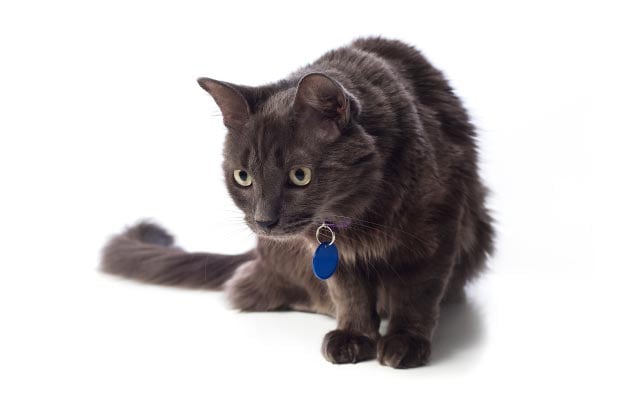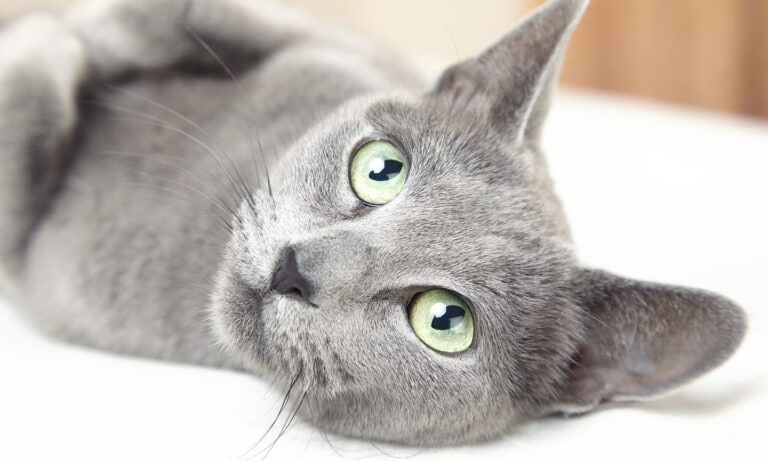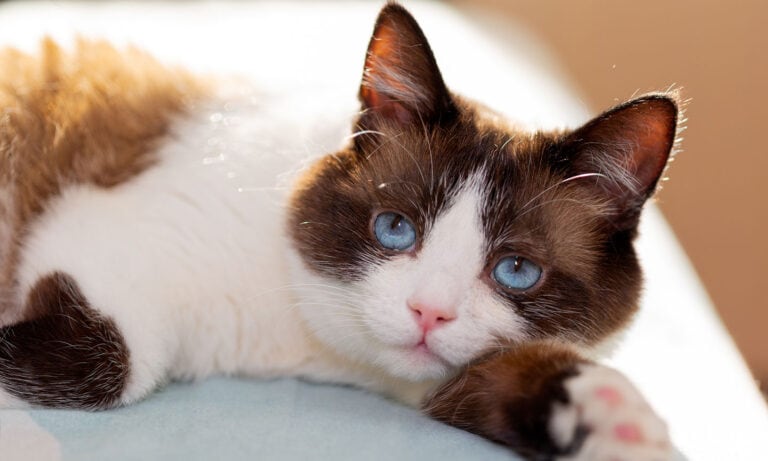About the Nebelung Cat Breed
The Nebelung is truly a beautiful “creature of the mist,” as her name implies. She is also a devoted and loyal companion.
Nebelung Physical Characteristics
Similar to the Russian Blue, the Nebelung is a long and graceful cat with firm muscles.
Color(s)
The Nebelung has a bright, blue-colored coat which is accented with silver-tipped guard hairs. The cat also has striking green eyes.
Coat
The breed sports a soft, semi-long coat with silky hair and a dense undercoat.
Activity Level
Medium
Nebelung Personality and Temperament
Positives
The mild-tempered and soft-spoken Nebelung will rarely give you sleepless nights. She is, however, affectionate — showering love upon her housemates.
Things to Consider
The breed is generally reserved and shy around strangers, and may even hide under the bed to avoid facing them.
Nebelung Care
Ideal Living Conditions
Like most cats, the breed does not do well with abrupt routine or environmental changes. However, with a little patience and encouragment, she can eventually adapt.
Nebelung Health
There are no known physical ailments which are more prone in Nebelung cats.
Nebelung History and Background
The story of the Nebelung breed began in the early 1980s when Cora Cobb, a computer programmer, gave a black domestic shorthair named Elsa to her son as a gift. Elsa later mated with a Russian Blue, producing a litter of five black and blue shorthairs. However, there was one kitten which had long blue hair. Cobb kept this curious male cat named Siegfried, and when Elsa gave birth to Brunhilde, another blue longhair, she also took it home. These two cats would be the first Nebelungs.
Cobb named the breed Nebelung, which means “creatures of the mist” in German, because of their unique appearance. And after contacting The International Cat Association’s (TICA) genetics chairperson, Dr. Solveig Pflueger, she was advised to write the breed standard. She chose to keep it nearly identical to the Russian Blue standard, except for the part describing its coat length.
The breed was recognized by TICA in 1987, but Russian Blue fanciers were hesitant in accepting the new breed. Moreover, they were reluctant in crossbreeding their cats, making it harder for Cobb continue the Nebelung line.
Finally, in 1988, the owner of Supreme Grand Champion Vladimir of Castlecats agreed to offer her a Russian Blue, in order to cross with one of Brunhilde’s daughters. Since then, the Nebelung increased in number and fame exponentially. However, it has yet to be recognized by the Cat Fanciers Association – something Nebelung fanciers hope to rectify in the coming years.
By: Chewy Editorial
Share:










